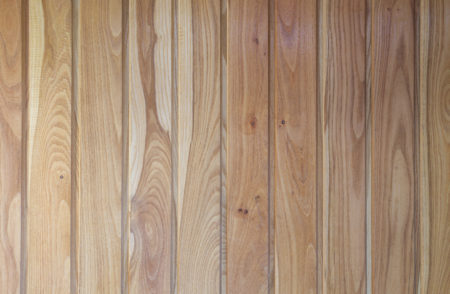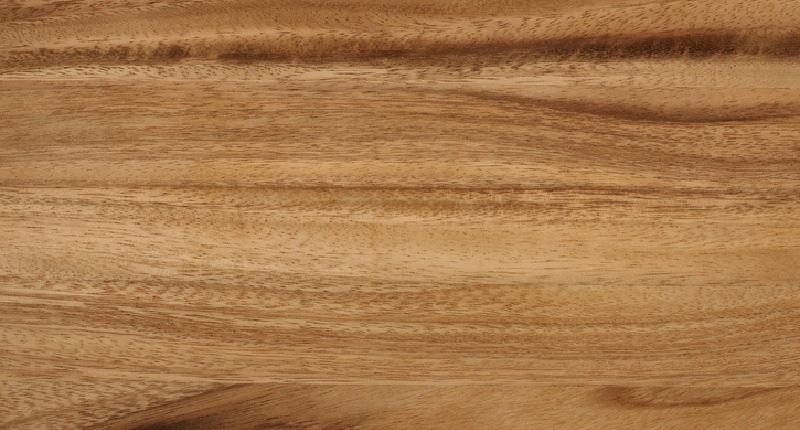Are you looking for an attractive, durable wood to use for your home projects? Acacia may be the perfect choice for you! This type of wood is known for its natural beauty and long lifespan. In this blog post, we will discuss acacia wood and all the different advantages of acacia wood, and how you can use it to create beautiful pieces of art.
What is Acacia Wood?
Acacia wood is a type of hardwood that comes from the acacia tree, which grows throughout Australia and Africa. It’s often referred to as Australian Acacia or African Wattle because it also has many different names in different locations around the world.
Where Does Acacia Wood Come From?
Acacia wood can grow in almost any country, however, they are most popularly grown and used in China and Brazil. Acacia trees have the ability to be planted just about anywhere and their wood is known to easily accommodate modifications such as carving and polishing. Whether it’s a Chinese-style pedestal table or a Brazilian sideboard, acacia wood is becoming more and more popular in the West.
Small Leaf Acacia Wood vs Acacia Wood
There is a big difference between small leaf Acacia wood and regular Acacia wood. The small leaf Acacia grows in areas that are much drier than the regular Acacia. This means that the small leaf Acacia is better suited for uses where there is a need for a durable, low-maintenance wood product.
One of the main advantages of small leaf Acacia is its resistance to rot and decay. This wood also has a very low moisture absorption rate, which means that it is not likely to warp, twist or shrink. Small leaf Acacia wood is also termite resistant, so it is a good choice for use in areas where there is a risk of termite damage.
In addition to its durability, small leaf Acacia wood is also a beautiful wood. It has a golden brown color that can darken over time to a rich, reddish-brown. This makes it a popular choice for use in both indoor and outdoor furniture, flooring, and other decorative applications.
 Is Acacia Wood a Good Choice for Furniture?
Is Acacia Wood a Good Choice for Furniture?
Acacia wood is a popular choice for furniture because it has many advantages over other types of hardwood.
The acacia tree can grow up to 30 meters tall, and the wood from this tree is incredibly strong. The strength-to-weight ratio of acacia wood is one of the best in the world, making it perfect for furniture that needs to be lightweight but still durable. Acacia wood also doesn’t warp or shrink very much, which makes it a good choice for outdoor furniture that will be exposed to humidity and rain.
In addition to its durability and resistance to moisture, acacia wood is more resistant than oak wood to insects and pests. This means that your furniture will last longer if it’s made from acacia wood, and you won’t have to worry about it being destroyed by bugs.
Overall, acacia wood is a great choice for furniture because it has an excellent strength-to-weight ratio, is resistant to moisture and pests, and doesn’t warp or shrink very much. If you’re looking for a durable, long-lasting material for your furniture, then acacia wood is worth considering.
Acacia Wood Products
Acacia wood products are made from the wood of the Acacia tree. There are many different acacia wood products that you can buy. These products include furniture, flooring, and other household items. Acacia furniture is beautiful and unique, and it’s also very sturdy. Acacia flooring, a widely used acacia wood product, is also a popular choice because it’s durable and looks great. If you’re looking for something special, you might want to check out acacia wood countertops. They’re a great way to add some extra character to your kitchen.
Why Use Acacia Wood For Furniture?
As mentioned, acacia wood has many benefits over other types of hardwood. For example, it’s very strong yet lightweight, which makes it perfect for furniture that needs to be both durable and portable.
Acacia wood furniture also has a high resistance to moisture and pests, which makes it a long-lasting alternative to other types of wooden furniture.
Additionally, acacia wood is beautiful and unique. The grains in the wood are very intricate, making each piece of furniture made from acacia wood completely unique. If you’re looking for an eye-catching material for your furniture, then acacia wood is worth considering.
Overall, there are many reasons why acacia wood is a great choice for furniture. It’s strong, lightweight and doesn’t warp or shrink very much, and also has an eye-catching grain that makes each piece of furniture unique. If you need durable yet portable wooden pieces for your home then acacia wood might be the perfect material!
Acacia Wood Flooring

One of the best acacia wood products is acacia wood flooring. We can also use acacia wood for hardwood flooring. There are many reasons to consider acacia wood flooring for your home. Acacia is a beautiful, durable hardwood that is perfect for both residential and commercial applications. That’s why we use acacia flooring.
How to Use Acacia Wood
If you’re interested in using acacia wood for your indoor or outdoor furniture, then there are a few things that you should keep in mind.
First of all, if the piece of acacia furniture is going to be exposed to rain or moisture then make sure that it has been properly finished and treated with water-resistant varnishes.
In addition, it’s also important to consider how much space each piece will take up when determining where it can be placed around the house. Acacia wood isn’t very heavy but its strength means that larger pieces may not fit through some doors or down certain hallways. If possible, try creating large pieces outside instead so they don’t have to go through tight spaces inside your home.
Finally, it’s also important to remember that acacia wood is a natural material we get from acacia trees and will therefore change over time. The wood may lighten or darken in color as it ages, so keep this in mind when selecting pieces that you want to last for a long time.
Advantages of Using Acacia Wood for Furniture
There are many reasons why acacia furniture is popular. Some of the key advantages include:
Durability – Acacia wood is one of the most durable hardwoods available, making it ideal for furniture that will be used frequently. It can withstand heavy use and is resistant to scratches, dents, and other damage.
The durability of acacia hardwood is one of the main reasons homeowners choose acacia wood flooring. Acacia wood is very dense, which makes

it resistant to wear and tear. It also has a natural shine that lasts for years with minimal upkeep.
Due to the durability of acacia wood, acacia timber is used in construction, furniture making, and other applications where hard, strong timber is required.
Stability – Acacia wood is also very stable, meaning it will not warp or crack over time. This makes it a good choice for furniture that will be used in humid environments or that needs to withstand heavy loads.
Acacia wood is harder than most furniture trees like European white oak, teak wood, carbonized bamboo, and maple.
Aesthetics – Acacia wood has a beautiful natural grain and color that can add an elegant touch to any room or outdoor furniture. It also finishes well, so it can be stained or painted to match your existing décor.
Affordability – Although acacia is a high-quality hardwood, it is relatively affordable compared to other types of wood furniture. This makes it a budget-friendly option for those who want the look and feel of real wood without breaking the bank.
If you are looking for a new piece of furniture, acacia wood is an excellent option. It has many advantages over other types of wood and can be customized to fit your needs.
Where to Buy Acacia Wood
If you are interested in purchasing furniture made from acacia wood or solid acacia wood, there are a few things to keep in mind.
First, it is important to find a reputable supplier who can provide high-quality products.
Second, be sure to compare prices between different suppliers to get the best deal.
Here are a few places where you can buy acacia wood furniture:
Online – Many online retailers sell acacia wood furniture. This is a convenient option if you want to shop from home and take advantage of free shipping offers.
Offline – Many brick-and-mortar stores carry acacia wood furniture. This can be helpful if you want to see the product before buying it or need assistance from a sales representative.
Specialty Stores – Some stores only sell acacia furniture and other products made from the same type of wood. If you want to go all-in with one product, this is an ideal option for finding high-quality pieces that match your style.
Before buying acacia wood or any piece of acacia furniture, it is important to do some research on the types of options available and where to buy them at the best price. By following these tips and choosing carefully, you can find acacia furniture that will last for years without breaking the bank or taking up too much space in your home.
How to care for your new piece of furniture made from acacia wood
Once you have your new acacia wood furniture, it is important to take care of it properly to prolong its life. Here are a few tips:
Dust regularly – Dust can build up over time and can cause damage to the finish of your furniture. Be sure to dust it at least once a week using a soft cloth.
Wipe spills immediately – If any liquid or food gets on your furniture, wipe it up right away with a damp cloth. This will prevent stains from forming.
Avoid exposure to direct sunlight – Sunlight can fade the color of your furniture over time. Try to avoid placing it in direct sunlight for long periods of time.
By following these simple tips, you can keep your new acacia wood furniture looking beautiful for years to come.
Tips on how to create a beautiful piece of art with acacia wood
If you are feeling creative, there are many ways to use acacia wood to create beautiful pieces of art for both outdoor and indoor furniture. Here are a few ideas:
Wood burning – This is a type of art that involves burning the surface of the wood with a heated tool. You can create intricate designs or patterns on your piece of wood using this technique.
Carving – Carving is another way to add detail and texture to your piece of wood. You can use simple tools like chisels and knives to carve out shapes and patterns in the wood.
Staining – Staining is a great way to give your piece of wood a unique look. There are many different types of stains available, so you can find one that matches your style.
By experimenting with different techniques, you can create a one-of-a-kind piece of art using acacia wood. Be creative and have fun with it!
Disadvantages of Acacia Wood?
Although acacia wood has many advantages, there is one potential downside: it is slightly heavy.
Make sure to follow the care instructions listed above to avoid any problems and don’t face any disadvantages of acacia wood.
Overall, acacia wood is a great choice for furniture and art projects due to its durability and beautiful appearance. With proper care, your pieces will last for years to come.
Conclusion
As you can see, acacia wood has many advantages. It is a durable, affordable option that can be customized to fit your needs. Additionally, it is easy to care for and can be used to create beautiful pieces of art. With so many benefits, it is no wonder why this type of wood is becoming increasingly popular among homeowners and decorators alike.
Overall, there are a few things to keep in mind when using acacia wood. Make sure that the piece is finished and treated with water-resistant varnishes if it will be exposed to moisture, try creating large pieces outside where possible, and remember that the wood may lighten or darken in color over time. With these tips in mind, you can create beautiful works of art with acacia wood today!
So what are you waiting for? Go out and find yourself some beautiful acacia wood furniture today.














































































